Accepted Scientific Name: Echinopsis chamaecereus H.Friedrich & Glaetzle
Bradleya 1: 96 (1983), nom. nov. Remarks: N. B.: non Echinopsis silvestrii Speg 1905
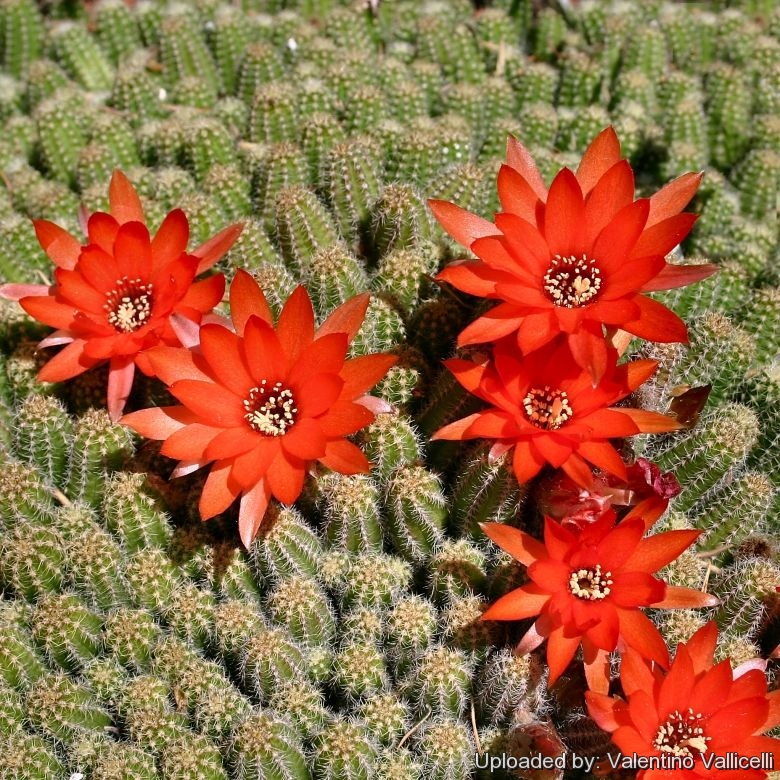
Chamaecereus silvestrii (Echinopsis chamaecereus) Photo by: Valentino Vallicelli
The traditional peanut cactus (Chamaecereus sylvestris) is a well known cactus with vivid red flowers, often produced in prolific quantities.
Origin and Habitat: This species is supposed to be endemic to Argentina, occurring between Tucumán and Salta. Echinopsis chamaecereusSN|16319]]SN|8692]] was collected by the botanist Carlo Spegazzini and described at the beginning of the XX century. However, the plant was never found again in the area during several expeditions on horseback by expert Roberto Kiesling, who only found in the area the widespread Echinopsis saltensisSN|8692]]SN|16319]].
Habitat and Ecology: Because the species has not been found in the wild, the type of vegetation it grows in is unknown.
Synonyms:
See all synonyms of Echinopsis chamaecereus
back
Accepted name in llifle Database:Echinopsis chamaecereus H.Friedrich & GlaetzleBradleya 1: 96 (1983), nom. nov. Remarks: N. B.: non Echinopsis silvestrii Speg 1905Synonymy: 9
Cultivars
(15):
back
Common Names include:
ENGLISH: Peanut Cactus
SWEDISH (Svenska): Krypkaktus
Description: The peanuts cactus, Echinopsis chamaecereusSN|8692]]SN|8692]] (probably best known under its old name Chamaecereus silvestriiSN|8694]]SN|8694]]), is a very popular cactus with many crowded finger-like stems. Established plants can reach a height of 15 cm and width of 30 (or more) cm.
Stems: Pale green finger sized, initially erect that became prostrate up to 10 cm tall, 1.2 cm in diameter, up to 15 cm long. As cactus ages, eventually eventually become woody and spineless.
Ribs: 8 to 10.
Spines: 10 to 15 soft, white bristles, 2 mm long.
Flowers: Orange-red about 5 cm in diameter, often produced in prolific quantities from an early age.
Blooming season: In several flushes in late spring and early summer.
Remarks: Chamaelobivia hybrids: The peanut cactus is still often encountered as Chamaecereus silvestriiSN|8694]]SN|8694]], and occasionally as Lobivia silvestriiSN|8695]]SN|8695]]. This plant has been intensively hybridized with other Echinopsis(especially Lobivia ssp.). This hybrids are sometime called "Chamaelobivia" and are pretty easy to grow and easy to get to bloom and are now available in different striking flower colours. They are often thicher, stronger, larger growing than C. sylvestrii and tend not to have the typical peanut shaped offsets. The offsets produced being more strongly attached to the main stems.
More...Subspecies, varieties, forms and cultivars of plants belonging to the Echinopsis chamaecereus group
Bibliography: Major references and further lectures:
1) Edward Anderson “The Cactus family” Timber Press, Incorporated, 2001
2) James Cullen, Sabina G. Knees, H. Suzanne Cubey "The European Garden Flora Flowering Plants: A Manual for the Identification of Plants Cultivated in Europe, Both Out-of-Doors and Under Glass" Cambridge University Press, 11/Aug/2011
3) David R Hunt; Nigel P Taylor; Graham Charles; International Cactaceae Systematics Group. "The New Cactus Lexicon" dh books, 2006
4) Clive Innes, Charles Glass “Cacti” Portland House, 1991
5) John Borg “Cacti: a gardener's handbook for their identification and cultivation” Blandford P., 1970
6) RHS "A-Z encyclopedia of garden plants." United Kingdom: Dorling Kindersley. 2008
7) Kiesling, R. 2013. Echinopsis chamaecereus. The IUCN Red List of Threatened Species. Version 2014.3. <www.iucnredlist.org>. Downloaded on 13 February 2015.
More...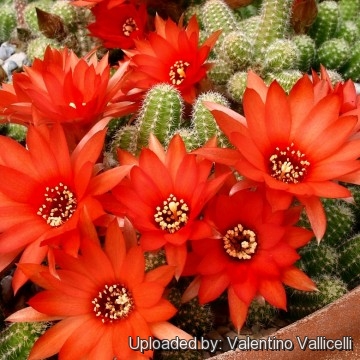 Chamaecereus silvestrii (Echinopsis chamaecereus) Photo by: Valentino Vallicelli
Chamaecereus silvestrii (Echinopsis chamaecereus) Photo by: Valentino Vallicelli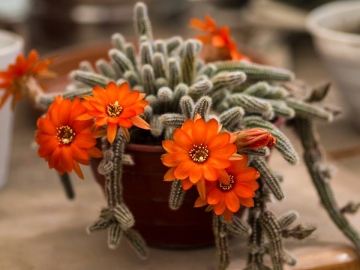 Chamaecereus silvestrii (Echinopsis chamaecereus) Photo by: Carolina González
Chamaecereus silvestrii (Echinopsis chamaecereus) Photo by: Carolina González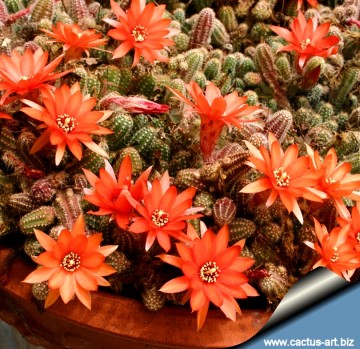 Chamaecereus silvestrii (Echinopsis chamaecereus) Photo by: Cactus Art
Chamaecereus silvestrii (Echinopsis chamaecereus) Photo by: Cactus Art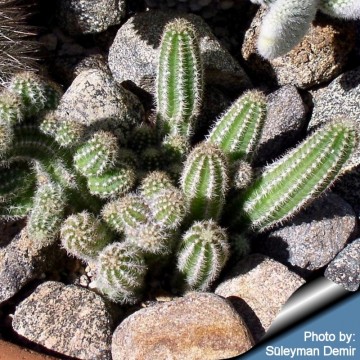 The common name comes from the peanut-like offsets that this cactus provides generously along the stems. (Echinopsis chamaecereus) Photo by: Cactus Art
The common name comes from the peanut-like offsets that this cactus provides generously along the stems. (Echinopsis chamaecereus) Photo by: Cactus Art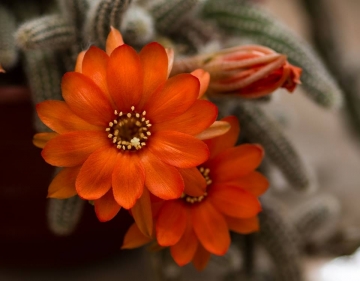 Chamaecereus silvestrii (Echinopsis chamaecereus) Photo by: Carolina González
Chamaecereus silvestrii (Echinopsis chamaecereus) Photo by: Carolina GonzálezSend a photo of this plant.The gallery now contains thousands of pictures, however it is possible to do even more. We are, of course, seeking photos of species not yet shown in the gallery but not only that, we are also looking for better pictures than those already present.
Read More... Cultivation and Propagation: This is an easily grown cactus, suited to hanging baskets as well as pots. Grow in well-drained soil in a sunny spot. This Echinopsis needs a period of cool rest in winter to produce flowers abundantly. It flowers freely indoors if conditions suit it. The plant survives outside without protection in winter (cold hardy to -8° ) but somewhat prone to rot, then, too.
Needs moderate water in summer, none in winter Watch for infestations of mealybug, scale insects and spider mite.
Propagation:: Easy to propagate from offsets or seed. Small joints are produced in quantities (peanuts) These offsets can be detached and planted immediately as they root easily with no assistance when they touch the ground. Just let them lay on the soil and you have a new start.
More...
















